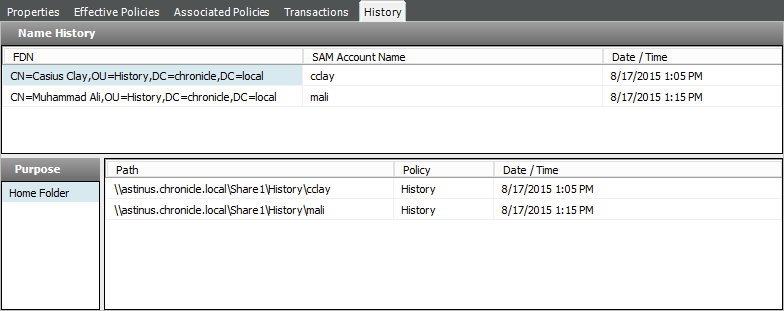C.6 History
The GSR Collector maintains two types of histories for an object in Active Directory. The FDN History records the FDN and SAM Account name of an object, when applicable (e.g. organization unit objects do not have a sAMAccount attribute). When an object gets renamed or moved, on the next run, it will catalog the new location or new name and the corresponding timestamp when the change was recorded.
The Path History records the location of paths that are commonly associated to users. When the Active Directory schema is extended to support user auxiliary storage and collaborative storage, the managed path attributes for user auxiliary, groups, and containers can be cataloged as well. The Path History consists of path types that are managed by Novell Storage Manager. The possible recorded path types are:
-
User Home folder
-
User Profile path
-
User Remote Desktop Services Home Folder
-
User Remote Desktop Services Profile Path
-
User Auxiliary (ccx-FSFAuxiliaryStorage)
-
Collaborative – Groups (ccx-FSFManagedPath)
-
Collaborative – Container (ccx-FSFManagedPath)
The granularity of the historical data is only as fine as the frequency at which you schedule the GSR Collector to run. If you schedule it to run once a week and you have objects that move several times over the course of a week between the runs, you’ll lose the interim historical move data.
The GSR Collector's historical data can be especially useful when managed paths are moved based on policy.
C.6.1 Viewing an Object’s History
-
In the Storage Management page, display a User object in the right pane and then double-click it.
-
In the Object Properties dialog box, click the History tab.
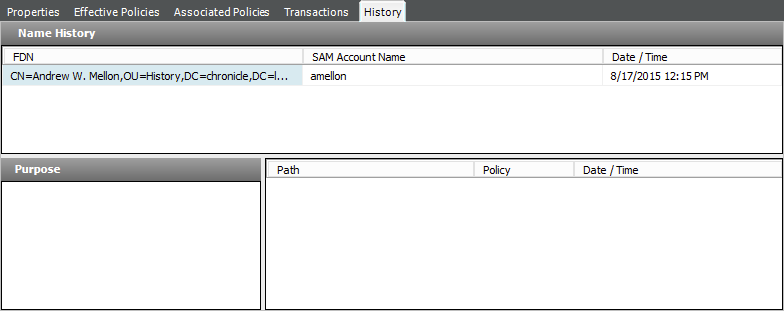
The example above shows an unmanaged user without a cataloged path.
The FDN column is the LDAP formatted location of the object. The SAM Account Name column is the sAMAccount attribute value. The Date/Time column is based on the local time of the NSM Engine when the history record was cataloged.
The example below shows the same unmanaged user that was moved from one organizational unit to another. This example demonstrates a change in the FDN and the date when the new value was cataloged by the GSR Collector when it was run.
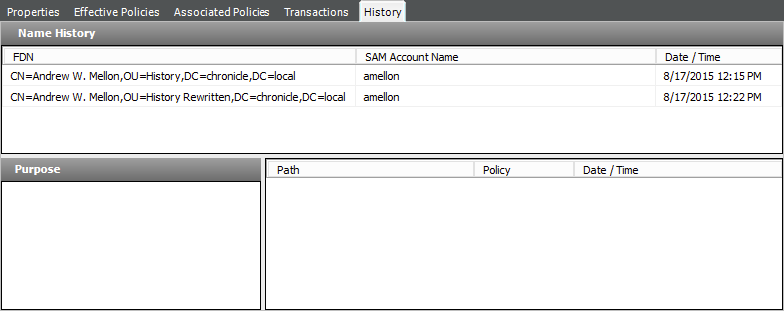
The example below shows an unmanaged user that has a home folder. The Policy column is empty because this user has not been managed. The Date/Time column for the path indicates the time at which the GSR Collector recorded the path.
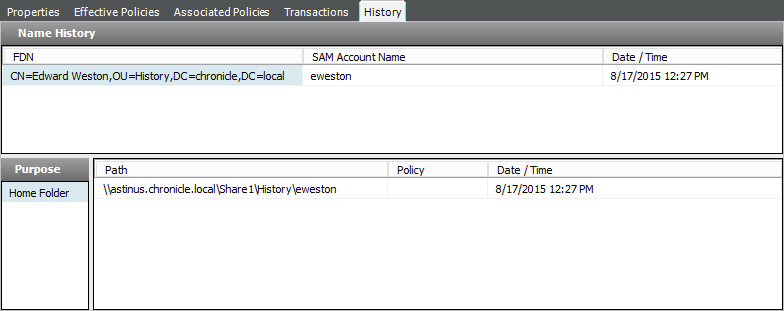
The example below shows the same user that has now been managed. The path now contains two entries. The first when the user was originally cataloged. The second reflects that the user is now managed and the policy that is managing it. This is useful because the Date/Time for Policy “History” indicates when the object became managed.
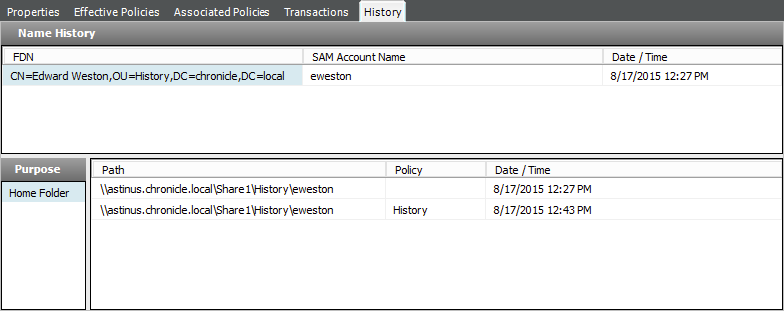
The example below shows the same user has now been moved from one container to another that is managed by a different policy. The user’s new FDN has been recorded as well as the new location of the path.
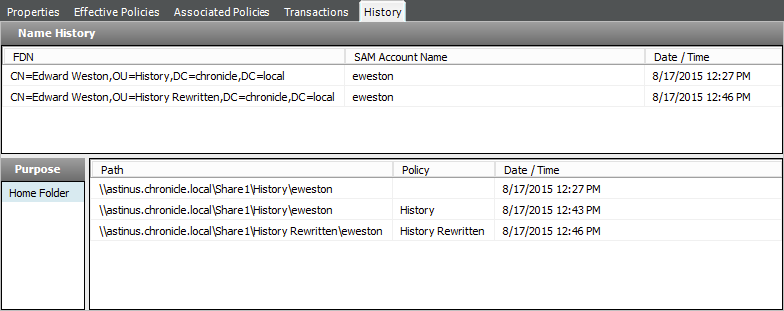
The example below shows the same user has now been moved to a container that is not managed by policy. The Policy column now shows that the path is no longer managed by an effective policy.
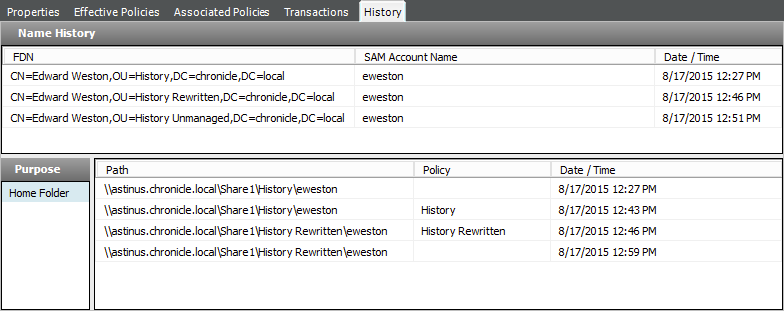
The History data also tracks the rename of objects and the relevant paths. The example below shows a managed user before it has been renamed.
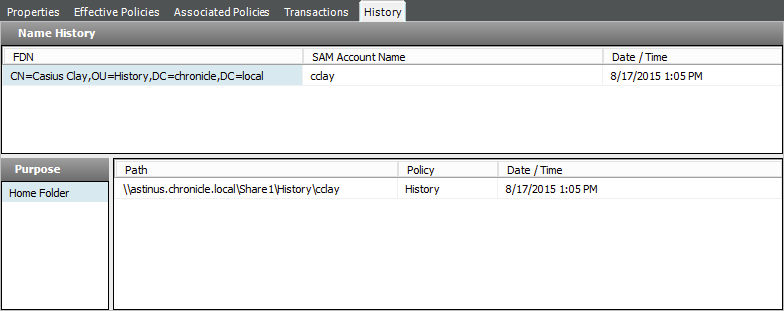
The example below shows the new FDN, SAM Account Name, and Path after having been renamed.
